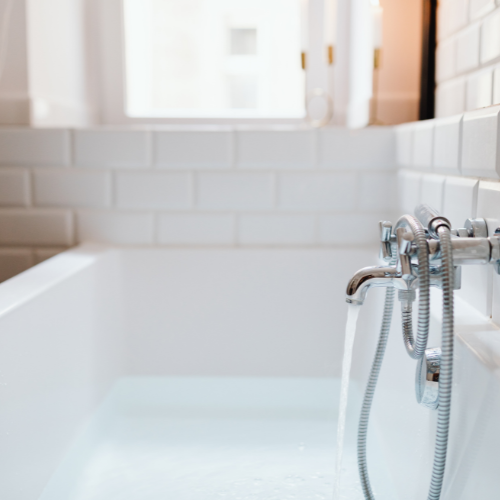When was indoor plumbing invented?
by Admin

Indoor plumbing is a vital part of daily life. It has changed the way people live and improved the quality of their lives.
Before indoor plumbing became the norm, people heated water in a pot or on a fire and then poured it into a bath tub to take a bath. Thanks to indoor plumbing, you can use hot or cold water whenever you want.
Ancient Egyptians
For most of Egypt's ancient history, people relied on water and food from the Nile River. The river's floods each year deposited a layer of fertile soil vital to agriculture.
The Nile is often referred as "the gift of the river", and was vital for transportation, food supplies and construction.
Egypt was a very advanced country in a number of fields including construction, astronomy and irrigation. The Egyptians were among the first coppersmiths. They made copper pipes, tools and vessels for their irrigation system.
Romans
Romans are among the earliest societies that adopted indoor plumbing. They built a complex network of aqueducts in order to bring clean water into their cities.
Their technology was so advanced that it boasted 220 miles of aqueducts to provide water for baths, homes, and public wells. This plumbing infrastructure helped the Romans become one of history's most powerful civilizations.
Greeks
The Greeks developed indoor plumbing as one of the earliest civilizations. The Greeks were the first to develop indoor plumbing.
The Romans, for example, used this system for centuries. This system was used by other civilizations as well, including the Romans. It allowed for the flushing of waste and brought fresh water into the cities.
Middle Ages
In the Middle Ages, Europe was united. Foreign invasions devastated many lands after the collapse of Rome's empire.
The Middle Ages saw a flourishing of Christianity despite this. Monks contributed to the survival of Christianity through reading, writing manuscript illumination, and panel painting.
The Bible and other sacred texts were also studied in Latin by medieval scholars. The first schools were opened where students could study reading, writing, math and other academic subjects.
18th century
It was not until the 18thcentury that people began to use indoor plumbing. While it has existed for more than 2,800 years. During this period, engineers created sewage pipes that carried waste away from houses.
Before the inventions of sewage, people would dispose of their waste in buckets and outhouses. This resulted in a variety of health issues including the spread disease.
The introduction of improved sewer systems and plastic pipe would solve this problem. It allowed more houses to have indoor plumbing.
19th Century
In many towns and cities, the living conditions were terrible in the nineteenth century. The conditions were unsanitary and dirty. Many people died from diseases.
In most houses, there were no indoor bathrooms until 1845. Instead, they used small outhouses referred to as cesspits and water pumps.
After 1845, the invention and use of sanitary sewers allowed for more homes to have toilets or baths inside. But there were still issues, such as bad plumbing or the smell of open sewer connections.
20th century
The 20th Century was a time when technological advancements changed the world on a number of levels. This was the time of the Space Race, atomic weapons, and the World Wide Web.
When cities began to expand and sewage became a requirement, indoor plumbing was developed. It meant people didn't have to dump their waste into the backyard or outhouse.
https://www.onpointplumbingandheating.com/
Indoor plumbing is a vital part of daily life. It has changed the way people live and improved the quality of their lives. Before indoor plumbing became the norm, people heated water in a pot or on a fire and then poured it into a bath tub to take a bath. Thanks to indoor plumbing,…
Recent Posts
- Comparing Invisalign and Traditional Braces for Teeth Straightening
- 2 Gen Realty LLC: Your Premier Partner for Real Estate Services in Waco and Beyond
- Anew Vision: Leading the Way in Transitional Independent Living Programs and Free Sober Living Homes in Texas
- CEDAR PARK ROOFING PRO’S: Your Trusted Partner for Premium Roofing Solutions in Cedar Park
- Carte Blanche Moving: The Premier Choice for Stress-Free Relocations in Flower Mound and Argyle, TX
